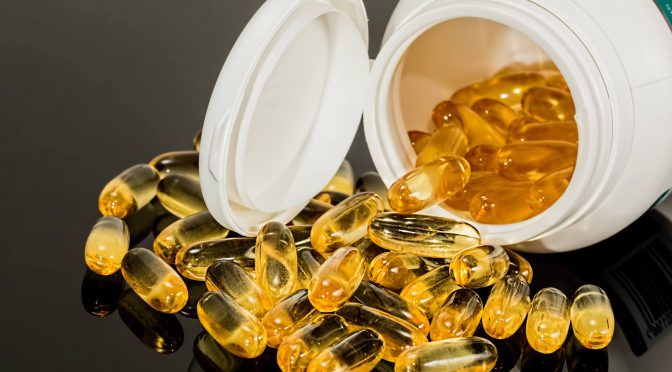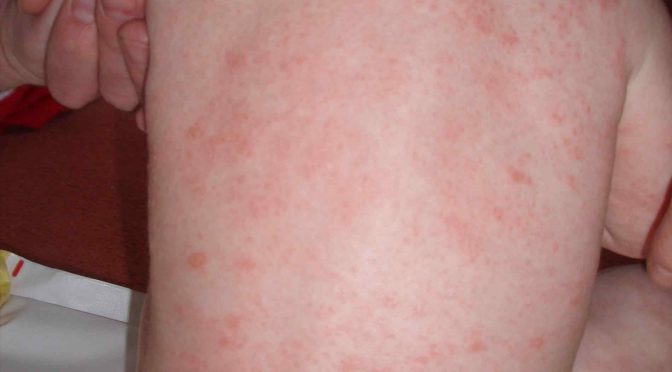The Complementary Healthcare Council of Australia (CHC) contests the recent US research reported in the Journal of the National Cancer Institute linking Omega-3 and prostate cancer as inconclusive and contradictory of a large pool of pre-existing, robust evidence that demonstrates the positive health benefits of fish oil.
Fish oil is known to be rich in omega-3 fat with its wide range of proven health benefits, I recommend animal-based omega-3 supplements to improve everyone’s overall health.
However, being one of the most well-researched substances on the market, omega-3 fat has been at the centre of negative publicity lately. Check out these shocking headlines:
- Link Between Omega-3 Fatty Acids and Increased Prostate Cancer Risk Confirmed (Science Daily1)
- Omega-3 Supplement Taken By Millions ‘Linked to Aggressive Prostate Cancer’ (Huffington Post2)
- Men who take omega-3 supplements at 71% higher risk of prostate cancer (NY Daily News3)
- Omega-3 supplements may trigger prostate cancer (Nursing Times4)
- Hold the salmon: Omega-3 fatty acids linked to higher risk of cancer (Time Magazine5)
Headlines such as these exemplify media’s gross misreporting of science, proving that the conventional press are not reliable sources of information regarding health issues.
Truth #1: “Study” against fish oil is merely anti-supplement bias.
On July 10, the Journal of the National Cancer Institute6 published the study from which sparked all this hoopla. This cohort-study7: ‘Omega-3 Fats Involved in Prostate Tumorigenesis,’ Researchers Claim, examined the connection between omega-3 levels in blood with prostate cancer risk among SELECT (Selenium and Vitamin E Cancer Prevention Trial)8 participants.
The researchers concluded that men with higher concentrations of animal-based (marine-derived) omega-3 in their blood had a 44 percent increased risk of developing low-grade prostate cancer compared to those with lower levels.
Higher blood levels of the omega-3 fat, specifically DHA, correlated to higher prostate cancer risk, while no correlation was found for ALA and EPA. Also, they had a 71 percent higher risk of developing high-grade prostate cancer.
Cancer “grade” is based on the level of abnormality found in the cancer cells.9 The more abnormal the cells look, the higher the cancer grade. How did the researchers reach the conclusion about the involvement of these fatty acids in prostate tumorigenesis based merely on these correlations?
The study, as Time Magazine10 reports, measured omega-3 levels in the blood of participating men; however, no information on their eating habits were included, so the effects of fatty acids from fish compared with those from supplements could not be differentiated by researchers. Incidentally, an overwhelming majority of the participants didn’t take fish oil supplements.
Furthermore, the study’s lead author, Theodore Brasky, says that based on the results, the safety of taking fish oil supplements for men with a family history of prostate cancer should be discussed with their doctor, since concentrated doses of omega-3 are contained in these pills.
Reportedly, between 30% to 60% of a fish serving is contained in supplements, which further adds up if fish oil supplement is taken daily. Brasky also suggested that men should minimize, but not entirely eliminate, their intake of fatty fish.
This is one of the most absurd advice I’ve encountered in a long time. It’s quite a mystery how they could conclude based on this study that omega-3 supplements might be dangerous. First of all, correlation is definitely not the same as causation.
Secondly, in this study, no omega-3 supplements were actually given to the participants, most of whom reportedly did not take them at all. Another clue that something’s fishy with this study is the finding that participants who had the highest levels of trans fats in their blood had in fact the lowest risk for prostate cancer.
In Dr. Bowden’s rebuttal in Huffington Post11, he ponders why many reporters and news outlets have connected higher DHA levels in the blood with ‘fish oil supplement taking.’
He further sumises that the best explanation for it, along with a desire for shocking headlines, is a strong anti-supplement bias. The researchers’ objectivity further comes into question when the reporters were told by Dr. Alan Kristy12, that they (the researchers) have once again shown that using “nutritional supplements may be harmful.”
Dr. Kristy, indeed, seems to be speaking for and in behalf of Senator Durbin and his hypocritically idiotic supplement bill, which grants the FDA more power to regulate supplements as if they were drugs, thereby threatening the supplement industry and possibly putting supplement companies out of business.
Truth #2: Do omega-3 fats increase men’s risk for prostate cancer? Hardly!
Previous studies have found that foods rich in omega-3 fats have been shown to prevent the spread of prostate cancer. The British Journal of Cancer13 in 2006 has published one such clinical study (as opposed to the featured study, which was merely observational and cannot therefore establish causality). This study found that while omega-6 fats (which are found in most vegetable oils) increased the spread of prostatic tumor cells into the bone marrow, omega-3 fats blocked the spread of cancer cells. This suggests that an omega-3 rich diet in men with early stage prostate cancer could potentially inhibit the disease.
According to a more recent meta-analysis14 of available research published in 2010, a 63 percent decrease in prostate cancer-specific mortality was associated with fish consumption, even though no association could be found between fish consumption and a significant decrease in prostate cancer incidence.
This topic was recently discussed by GreenMedInfo.com15 as well, with a list of additional studies showing the benefits of fish/fish oil/omega-3 against prostate cancer.
Denise Minger16 has pointed out that previous research17 has shown that higher levels of DHA in the blood as found in the featured study does not necessarily indicate higher fish consumption. In fact, DHA levels can increase with low-fat diets just as much as with omega-3 supplementation. According to this previous research:
Free fatty acid compositions respond to the total dietary fat content. Specifically, consuming a low fat diet increases the level of total and highly unsaturated long-chain (n-3) fatty acids and decreases the total (n-6) content of plasma phospholipid and cholesteryl ester fatty acids. The observed changes in phospholipid and cholesteryl ester fatty acids in response to a low fat diet are similar to those observed when (n-3) fatty acids from plants or animals are consumed.
Truth #3: DHA levels in the featured study may be meaningless.
In addition, the DHA levels, as reported in the featured study, were based on percentage of total fatty acids rather than on the absolute value, thus can be quite misleading,18 and actually obscures any real differences. The dilemma is appropriately illustrated by the following analogy by Dr. Bowden:
“Would you like 90 percent of all the money Mr. Jones has or 10 percent of all the money Mr. Smith has?”
Unless you know how much money Mr. Jones and Mr. Smith each have to begin with, how could you possibly tell how much money those percentages represent? The American Journal of Clinical Nutrition19 has published a 2009 commentary which explained that the only time the percentage of total might be meaningful is when the total fatty acid content is identical for all subjects, which undoubtedly in this case was not.
Dr. Bob Roundtree, MD20 has stated that based on the extensive body of literature supporting omega-3’s anti-inflammatory effects,
“there is no credible biological mechanism that would explain why these essential fatty acids might increase tumorigenesis.”
Truth #4: Confounding factors were not taken into consideration.
Another problem with studies which look at correlations only, is that the factor being considered may play only a minor role, or may even be completely irrelevant, compared to other factors. In this case for instance:
- 53 percent of the subjects with prostate cancer were smokers
- 64 percent of the cancer subjects regularly consumed alcohol
- 80 percent of the cancer subjects were overweight or obese
A 2011 study published in PLoS One,21 states that aggressive prostate cancer was associated with obesity. More recently, in April of this year, Cancer Epidemiology, Biomarkers & Prevention22 published a cohort study which found that overweight or obese men increased their risk of prostate cancer by 57 percent – a percentage that falls right in the middle of the 44-71 percentage range which the featured study attributed to high DHA serum levels. This association between obesity and prostate cancer was true for all cases – low-grade and high-grade, early and late stage, non-aggressive and aggressive prostate cancer.
Sources and References
-
1, Science Daily July 10, 2013
-
2, Huffington Post July 11, 2013
-
3, NY Daily News July 11, 2013
-
4, Nursing Times July 11, 2013
-
5, Time Magazine July 11, 2013
-
6, Journal of the National Cancer Institute July 10, 2013 [Epub ahead of print]
-
7, Penn State Research Methods, Case Cohort Design
-
8, National Cancer Institute, Clinical Trials: SELECT
-
9, Cancerresearchuk.org
-
10, See ref 5
-
11, Huffington Post July 17, 2013
-
12, See ref 11
-
13, British Journal of Cancer March 7, 2006
-
14, American Journal of Clinical Nutrition 2010 Nov;92(5):1223-33
-
15, Greenmedinfo.com July 12, 2013
-
16, Raw Food SOS
-
17, Journal of Nutrition 2001: 131(2); 231-234
-
18, American Journal of Clinical Nutrition June 2009: 89(6); 1946
-
19, See ref 18
-
20, DrNalini.com
-
21, PLoS One 2011 Feb 24;6(2):e17382
-
22, Cancer Epidemiology, Biomarkers & Prevention April 23, 2013 [Epub ahead of print]
We are happy to provide you more information. Click here to contact us for more details to find out how can be the fish oil beneficial for you.
 (*) Results can vary from person to person.
(*) Results can vary from person to person.













